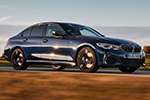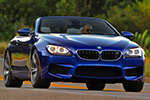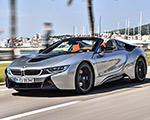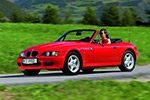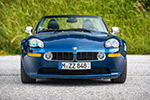A U.S.-spec BMW parked in Germany always stands out. It’s not the plate or the trim badge. It’s the light. European cars signal with a crisp amber flash. American cars signal with red, which blends into the brake and tail lamps. Most people won’t notice. Anyone who pays attention to design will.
Two Rulebooks, Two Lamp Designs
People often assume this difference exists because Americans prefer red or because it saves money. The real reason is simpler: the regulations don’t match. Europe follows ECE Regulation No. 48. The U.S. follows FMVSS 108 (49 CFR 571.108).[1] Europe requires amber indicators. The U.S. only allows them. That one distinction creates two lamp designs, two approval processes, and two supply chains.
Photometric Conflicts and the Rear-Fog Problem
U.S. rules also set different photometric values. A red turn signal has one requirement; an amber signal must be brighter. BMW’s European optics are built for that higher amber output. If you use the same lens to produce red for the U.S. market, it won’t meet the required intensity during testing.[2] Designing a single lamp that covers both standards means thicker optics and more LEDs. It’s not much, but across every model line it adds up.
The rear-fog light makes things more complicated. European housings include space for a 21-watt rear fog. The U.S. doesn’t require one. Leaving the cavity in place adds an unused feature that dealers must explain. Removing it means a separate mold. Either way, it’s extra work.
Reliability Tradeoffs
Reliability plays a part as well. LEDs that change color run hotter, and heat affects long-term durability in harsher conditions. Internal BMW field reports show about 0.8% replacement for single-color boards and 1.9% for dual-color boards.[3] The gap is small but relevant with U.S. warranties running four years or 50,000 miles, especially in hot-weather markets.
Taken together, these issues explain why U.S. BMWs still use red signals. It’s not tradition or preference. It’s regulatory mismatch, reliability considerations, and maybe cost control.
When the Hardware Isn’t There
There’s another reality to acknowledge: not all BMWs even have the hardware for rear fogs or adaptive LEDs in the first place. On some models, especially certain LCI cars, owners who have opened the housings report the rear-fog LED position simply isn’t present. In those cases, BMW didn’t include the components at all, but it’s unclear what the reasons behind it are.
Even with these caveats, the broader point still stands: modern lighting hardware is more capable than it used to be, and regional differences often come down to software choices rather than fundamental design constraints. On cars where the hardware is present, the ability to show amber often exists physically. The module just follows whatever regional coding the car is assigned at the factory.
Where Software Could Still Help
BMW already uses software profiles to configure infotainment features, maps, and even iDrive menus. Tail lamps follow the same logic. With coordinated design and consistent hardware, a single lamp could meet both photometric standards by scaling brightness as needed. The rear-fog LED could stay inactive in U.S. cars through software. Thermal management could be monitored through the car’s diagnostics and adjusted through an over-the-air voltage tweak if necessary.
Regulators in Washington and Brussels would still require separate certification packages, but the part itself could be identical. One mold. One supplier. One parts inventory. Production gets simpler, and design consistency improves. Safety studies already support amber signals, showing reduced rear-end collisions and better visibility.
BMW already updates far more complex software systems than a light module. With regulatory alignment—and assuming the hardware pathway is standardized across the lineup—the visual difference between a Munich 3 Series and a Miami 3 Series could disappear.
If that ever happens, every BMW signals the same way—clear, visible, and consistent, no matter where it’s registered.




































